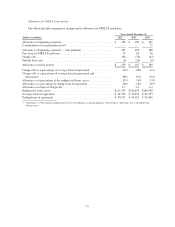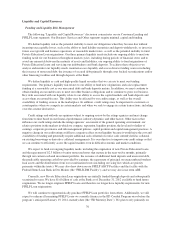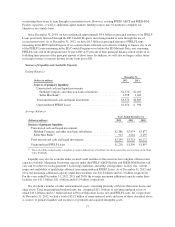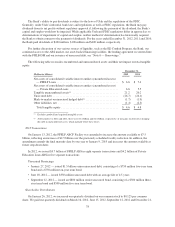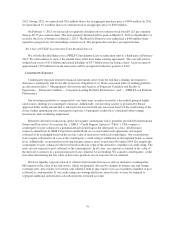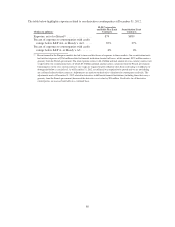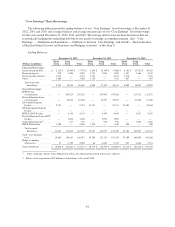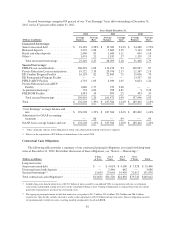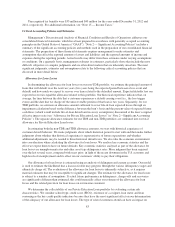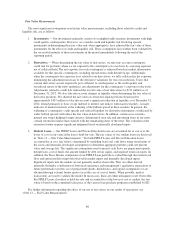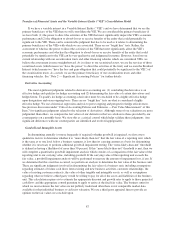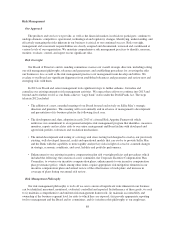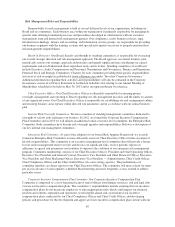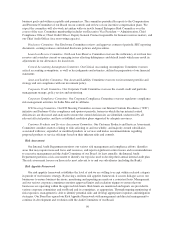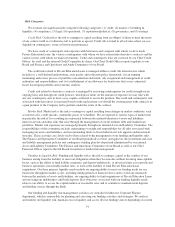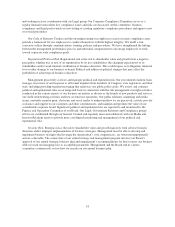Sallie Mae 2012 Annual Report Download - page 87
Download and view the complete annual report
Please find page 87 of the 2012 Sallie Mae annual report below. You can navigate through the pages in the report by either clicking on the pages listed below, or by using the keyword search tool below to find specific information within the annual report.FFELP Loans are insured as to their principal and accrued interest in the event of default subject to a Risk
Sharing level based on the date of loan disbursement. These insurance obligations are supported by contractual
rights against the United States. For loans disbursed after October 1, 1993, and before July 1, 2006, we receive
98 percent reimbursement on all qualifying default claims. For loans disbursed on or after July 1, 2006, we receive
97 percent reimbursement. For loans disbursed prior to October 1, 1993, we receive 100 percent reimbursement.
The allowance for FFELP Loan losses uses historical experience of customer default behavior and a two
year loss confirmation period to estimate the credit losses incurred in the loan portfolio at the reporting date. We
apply the default rate projections, net of applicable Risk Sharing, to each category for the current period to
perform our quantitative calculation. Once the quantitative calculation is performed, we review the adequacy of
the allowance for loan losses and determine if qualitative adjustments need to be considered.
Premium and Discount Amortization
The most judgmental estimate for premium and discount amortization on student loans is the Constant
Prepayment Rate (“CPR”), which measures the rate at which loans in the portfolio pay down principal compared
to their stated terms. Loan consolidation, default, term extension and other prepayment factors affecting our CPR
estimates are affected by changes in our business strategy, changes in our competitor’s business strategies,
legislative changes, interest rates and changes to the current economic and credit environment. When we
determine the CPR we begin with historical prepayment rates due to consolidation activity, defaults, payoffs and
term extensions from the utilization of forbearance. We make judgments about which historical period to start
with and then make further judgments about whether that historical experience is representative of future
expectations and whether additional adjustment may be needed to those historical prepayment rates.
In the past the consolidation of FFELP Loans and Private Education Loans significantly affected our CPRs
and updating those assumptions often resulted in material adjustments to our amortization expense. As a result of
the passage of HCERA, there is no longer the ability to consolidate under the FFELP. In addition, due to the
current U.S. economic and credit environment, we, as well as many other industry competitors, have suspended
our Private Education Loans consolidation program. As a result, we do not expect to consolidate FFELP Loans in
the future and do not currently expect others to actively consolidate our FFELP loans. As a result, we expect
CPRs related to our FFELP Loans to remain relatively stable over time. See “Business Segment Earnings
Summary — ‘Core Earnings’ Basis — FFELP Loans Segment” of this Item 7, for discussion of the impact of a
recent Special Direct Consolidation Loan Initiative in 2012. We expect that in the future both we and our
competitors will begin to consolidate Private Education Loans. This is built into the CPR assumption we use for
Private Education Loans. However, it is difficult to accurately project the timing and level at which this
consolidation activity will begin and our assumption may need to be updated by a material amount in the future
based on changes in the economy and marketplace. The level of defaults is a significant component of our
FFELP Loan and Private Education Loan CPR. This component of the FFELP Loan and Private Education Loan
CPR is estimated in the same manner as discussed in “Critical Accounting Policies and Estimates — Allowance
for Loan Losses” of this Item 7 — the only difference is for premium and discount amortization purposes the
estimate of defaults is a life-of-loan estimate whereas for allowance for loan losses it is a two-year estimate.
85


